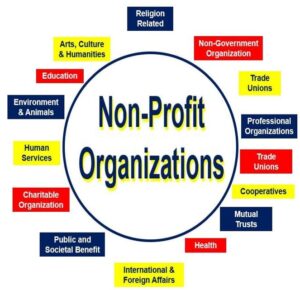
A nonprofit organization (NPO) operates to serve a public or social benefit rather than generating profit for owners or shareholders. Unlike for-profit businesses, a nonprofit’s primary goal is to support charitable, educational, religious, cultural, or scientific purposes. These organizations reinvest any surplus funds back into their mission, ensuring that the majority of their resources go toward achieving their objectives.
Structure and Governance
Most nonprofit organizations are governed by a board of directors or trustees who provide oversight and strategic direction. These board members, often volunteers, are responsible for making critical decisions, ensuring accountability, and maintaining the organization’s ethical standards. Nonprofits must follow specific regulations depending on their country of operation, and many seek tax-exempt status to further their goals.
Funding and Sustainability
Nonprofits rely on diverse funding sources to maintain their operations. Common avenues include donations from individuals, grants from foundations, corporate sponsorships, and government support. Many organizations also host fundraising events or campaigns to raise money and awareness. While nonprofits do not aim to make a profit, they must manage their finances responsibly to remain sustainable over the long term.
Types of Nonprofit Organizations
There are several types of nonprofit organizations, each serving distinct purposes:
- Charitable Organizations: Focus on aiding specific causes, such as poverty, education, or health.
- Foundations: Often established by individuals, families, or corporations, they provide grants to other organizations or individuals to support charitable activities.
- Social Advocacy Organizations: Work to bring about social change, often through public awareness campaigns or lobbying for policy reforms.
- Cultural Organizations: Promote arts, heritage, and cultural education, often through museums, theater companies, and cultural festivals.
Impact and Accountability
Nonprofits measure their success by the impact they have on their communities or the causes they support. To maintain credibility and attract ongoing support, these organizations must be transparent with their finances and operations. Most nonprofits produce annual reports, which provide detailed information on their financial health and the outcomes of their programs. Donors and stakeholders expect nonprofits to demonstrate a clear connection between the resources they receive and the tangible results they achieve.
The Role of Volunteers
Volunteers play a critical role in nonprofit organizations. Many NPOs rely on volunteers to carry out their programs, assist in fundraising efforts, or provide administrative support. The involvement of dedicated volunteers allows nonprofits to extend their reach and do more with limited resources.
FAQs:
- What is a nonprofit organization?
- A nonprofit organization is an entity that operates to fulfill a mission or serve a social cause, rather than to make a profit for its owners or shareholders.
- How does a nonprofit organization make money?
- Nonprofits primarily raise funds through donations, grants, fundraising events, and sometimes through the sale of goods or services.
- Can a nonprofit organization make a profit?
- Yes, but any profits must be reinvested into the organization’s mission, not distributed to individuals.
- What is tax-exempt status?
- Tax-exempt status allows a nonprofit to be free from paying federal income tax on revenue related to its mission, typically under IRS Section 501(c)(3).
- Who runs a nonprofit organization?
- Nonprofits are usually governed by a board of directors or trustees, with day-to-day operations managed by executive staff.
- What types of nonprofits are there?
- Nonprofits can include charitable organizations, foundations, advocacy groups, educational institutions, and religious organizations.
- How do nonprofits maintain transparency?
- Nonprofits often disclose financial statements, publish annual reports, and comply with government regulations to ensure transparency and accountability.
- Can a nonprofit have paid employees?
- Yes, nonprofits can employ paid staff in addition to utilizing volunteers for their operations.
- What challenges do nonprofits face?
- Common challenges include securing consistent funding, demonstrating impact, and complying with regulations.
- How can I start a nonprofit organization?
- To start a nonprofit, you need to define your mission, form a board, register the organization, apply for tax-exempt status, and comply with legal requirements.
To visit:https://services.india.gov.in
For further details access our website: https://vibrantfinserv.com

